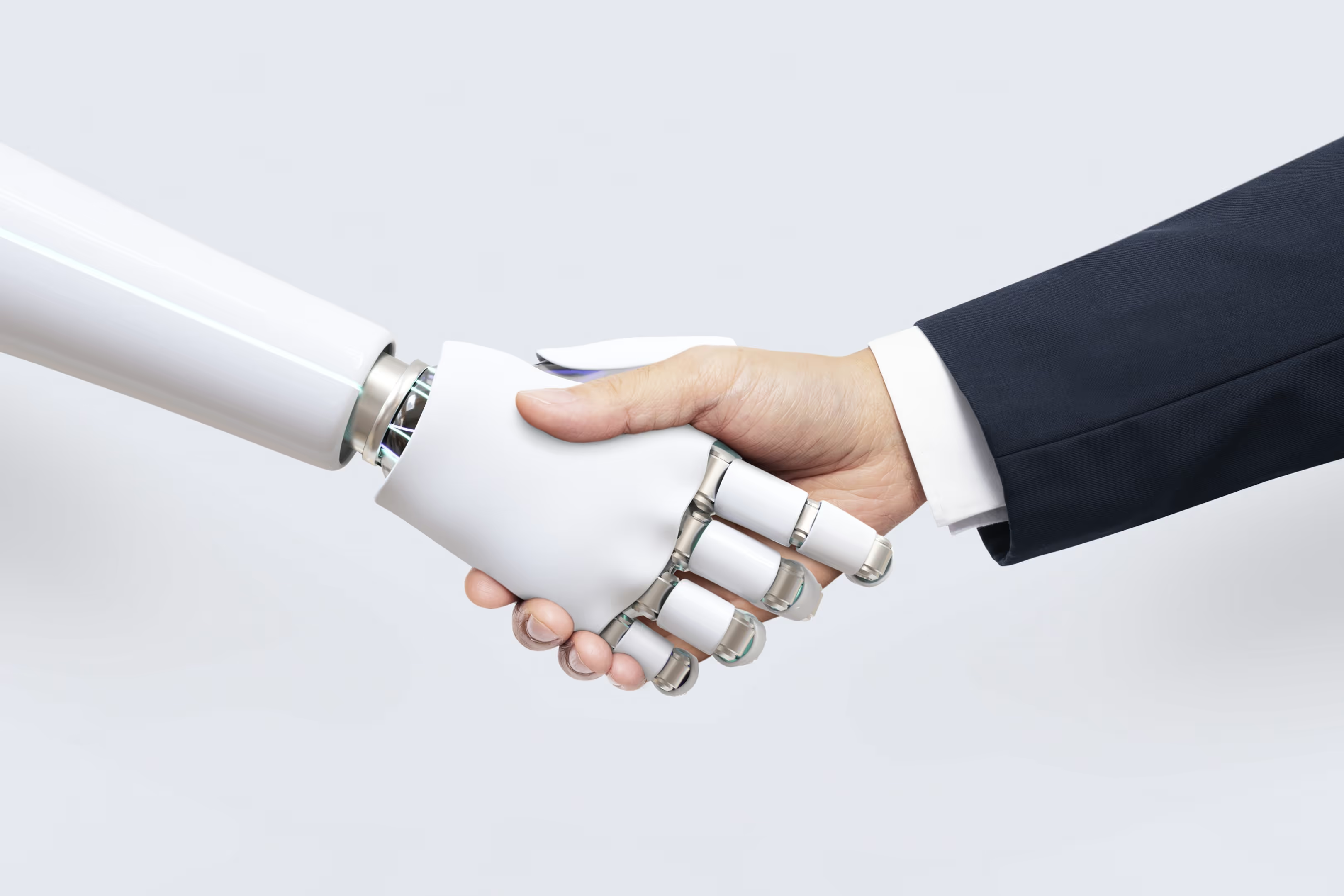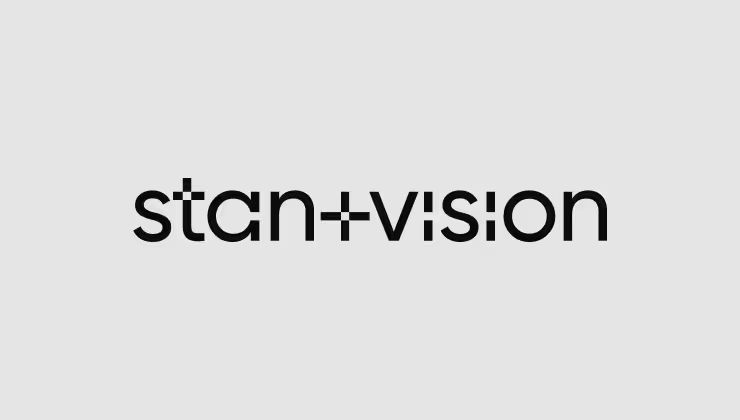The rise of AI in web development
.avif)
Web development AI tools profoundly impact web development, changing how developers approach various aspects of their work. From automating routine tasks to personalizing user experiences, AI enables a new level of sophistication and efficiency.
Here are some key trends and functionalities driving this transformation:
Automating repetitive tasks
One of the most significant advantages of AI in web development is its ability to automate repetitive tasks using AI-powered tools. This not only saves time but also reduces the risk of human error. Here’s how AI is streamlining workflows:
Code generation and assistance
Tools like OpenAI’s Codex, integrated into GitHub Copilot, use machine learning to assist in the development process by writing code. These tools can autocomplete code snippets, generate boilerplate code, and even suggest solutions based on context. This automation accelerates development and helps developers focus on more complex problems.
Automated testing
AI-driven testing tools like Testim and Applitools leverage machine learning to automatically generate test cases, identify issues, and streamline development processes by providing insights into user interactions. These tools can simulate various user scenarios and ensure that web applications function correctly across different environments.

Content generation
AI tools like Jasper and Copy.ai can create content for websites, including product descriptions, blog posts, and marketing copy. These tools can generate text that matches the desired tone and style by analysing existing content and understanding the context.
Enhancing user experience
Web designers find AI instrumental in personalizing and enhancing user experiences. AI tools can deliver tailored content and interactions by analysing user behaviour and preferences. Here’s how:
Personalized recommendations :
AI algorithms can analyze user data to provide personalized recommendations. For example, e-commerce sites use recommendation engines to suggest products based on browsing history and purchase patterns. This improves user engagement and increases conversion rates.

Chatbots and virtual assistants:
AI-powered chatbots, such as those built with Dialogflow or Microsoft Bot Framework, provide instant support and assistance. These chatbots can handle common queries, guide users through processes, and even learn from interactions to improve over time.
Dynamic content adaptation:
AI can dynamically adjust website content based on user preferences and behavior. Tools like Adobe Experience Manager use AI to analyze user interactions and optimize content delivery, ensuring that users see the most relevant information.
Improving efficiency
AI contributes to increased efficiency in software development by optimizing various processes and workflows:
Code quality and optimization:
AI tools like DeepCode and SonarQube use machine learning to analyze code quality, identify vulnerabilities, and suggest improvements. These tools help maintain high code standards and enhance overall application performance.
Design assistance:
AI-driven design tools such as Figma’s design system and Adobe Sensei assist designers in creating layouts and graphics. These tools can suggest design elements, automate repetitive tasks, and even provide design recommendations based on user data.
SEO optimization:
AI-powered SEO tools like Clearscope and SurferSEO analyze search engine algorithms and provide insights to optimize content for better rankings. These tools are integral to search engine optimization (SEO) as they offer keyword suggestions, analyze competitors, and evaluate content relevance, helping websites achieve higher visibility.

Practical tips for integrating AI in web development projects
Integrating AI web development tools into web development projects can be a game-changer, but it requires careful planning and execution. Here are some practical tips for successful integration:
Define clear objectives
Before integrating AI, define clear objectives for what you want to achieve. Whether it’s automating tasks, personalizing user experiences, or improving efficiency, having a clear goal will guide your AI strategy and help you choose the right tools.
Choose the right tools
Selecting the appropriate AI tools is crucial. Evaluate tools based on their functionality, ease of integration, and compatibility with your existing tech stack. Consider factors like support, documentation, and community engagement when making your decision.
Ensure data quality
AI relies on data to function effectively. Ensure that the data you use is accurate, relevant, and up-to-date. Implement data validation and cleaning processes to maintain high data quality, which will result in more reliable AI outcomes.
Focus on user privacy
When using AI, especially for personalizing user experiences, prioritize user privacy and data protection. Implement robust security measures and comply with relevant regulations such as GDPR. Be transparent with users about how their data is used and provide options to opt out if desired.
Monitor and evaluate performance
After integrating AI, continuously monitor its performance and impact. Use analytics tools to track key metrics and assess how well the AI functionalities are meeting your objectives. Regularly review and update AI models to ensure they remain effective and relevant.
Invest in training and skills development
AI technologies are evolving rapidly, and staying current is essential. Invest in training and skills development for your team to ensure they can effectively use and manage AI tools. This includes staying informed about new advancements and best practices in the field.

Leading AI tools for web development
Web developers are finding several AI tools that are making significant strides in web development, offering functionalities that enhance automation, user experience, and efficiency. Here are some of the leading tools:
GitHub Copilot
GitHub Copilot, powered by OpenAI’s Codex, assists developers by suggesting code snippets and completions. It learns from the context of your code and provides relevant suggestions, helping to speed up development and improve coding efficiency.
Testim
Testim is an AI-driven testing platform that automates the creation and execution of test cases. Its machine learning algorithms adapt to changes in the application, making it easier to maintain and scale test suites.
Jasper
Jasper is an AI content-generation tool that creates high-quality text for websites, blogs, and marketing materials. It leverages natural language processing to generate content that aligns with your desired tone and style.
Adobe Sensei
Adobe Sensei is an AI and machine learning platform integrated into Adobe’s suite of tools. It enhances design processes by providing intelligent recommendations, automating repetitive tasks, and improving creative workflows.
Dialogflow
Dialogflow, by Google, is a platform for building conversational interfaces such as chatbots and virtual assistants. It uses natural language understanding to interpret user input and provide relevant responses, improving user interaction and support.
Clearscope
Clearscope is an AI-powered SEO tool that analyzes content and provides insights to optimize it for search engines. It offers keyword suggestions, content recommendations, and competitor analysis to improve search engine rankings.

AI is revolutionizing web development by automating repetitive tasks, enhancing user experiences, and improving efficiency. The latest trends and tools in AI offer developers powerful functionalities to streamline workflows, personalize interactions, and optimize performance. By defining clear objectives, choosing the right tools, and focusing on data quality and user privacy, developers can successfully integrate AI into their projects. As AI continues to advance, staying informed and investing in ongoing training will be key to leveraging its full potential in web development.

Building better digital experiences, together
We’re a team of strategists, designers, and developers passionate about crafting impactful digital experiences.
From user-friendly websites to scalable design systems, we help businesses grow and connect with their audiences. Explore how we can bring your vision to life.




